Movies
‘Wyrmwood: Apocalypse’ Director Kiah Roache-Turner On Stunts, Song Choices, and Zombie Hot Takes
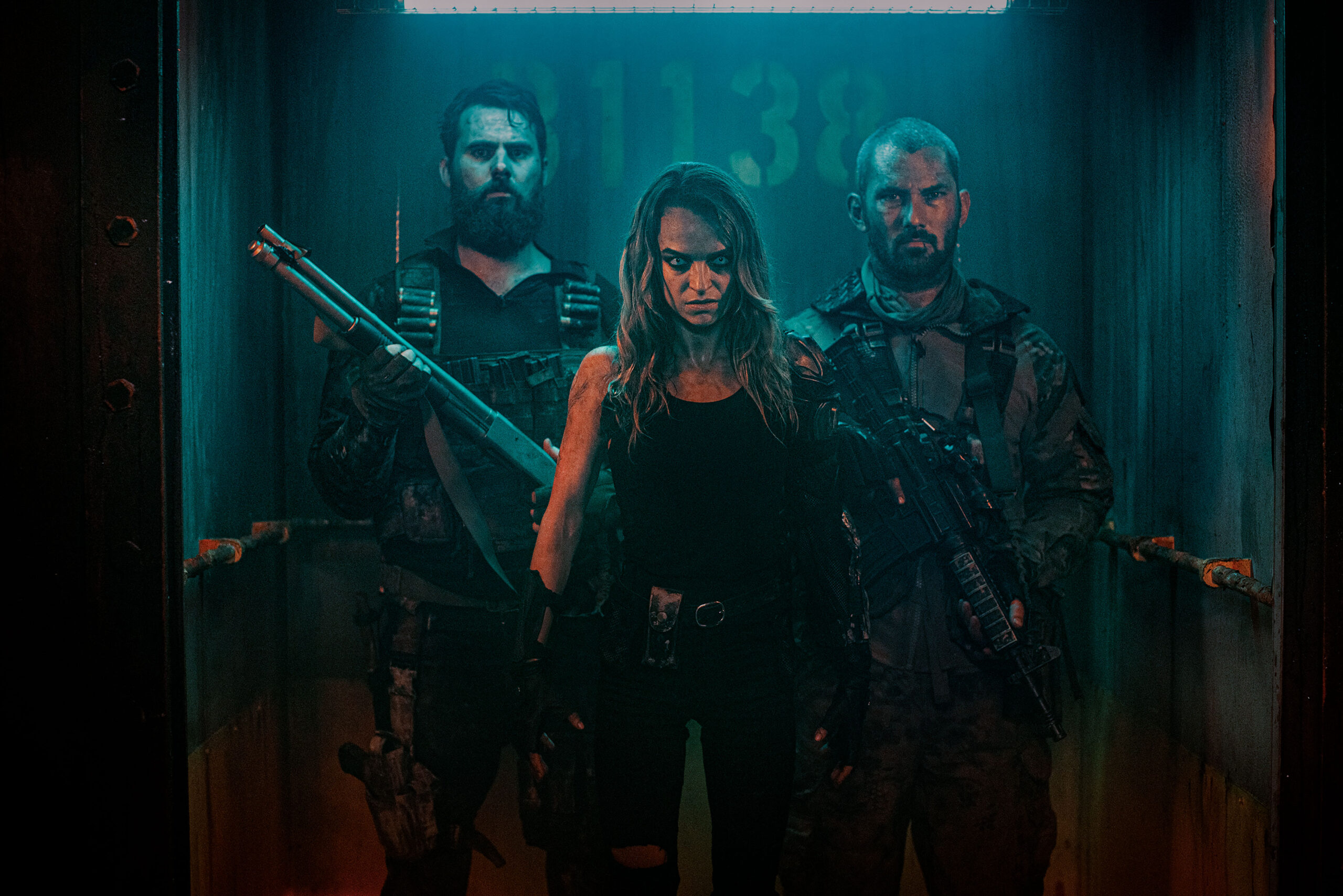
Back in 2014, Australia’s Wyrmwood: Road of the Dead was a bold entry into the zombie lore. It delivers a high-octane burst of violence, gore, and gears, with methane-breathing zombies that fuel a unique vision for the zombie apocalypse. The film’s recent sequel, Wyrmwood: Apocalypse, charges forward with a continuing story, some fresh new faces, and a whole lot of carnage.
We sat down with the film’s director, Kiah Roache-Turner, to discuss the film, its creative ideas, making a pandemic movie during a global pandemic, and some zombie hot takes.
Kelly McNeely: I loved Wyrmwood, and Wyrmwood: Apocalypse was super fun. It’s a perfect blend of Mad Max and Dawn of the Dead. Was a sequel always on your mind? Or how did that come about?
Kiah Roache-Turner: I guess it was built from the ground up as something you could sequalize. It was our first film. And we were sort of smart enough to know that when you make your first film, your first film should be the physical equivalent of, like, jumping up and down, hey look at me. So you want to try and create something that hopefully – fingers crossed – is vaguely iconic. And, you know, really super cool.
We worked pretty hard on trying to make a world that was attractive for an audience, but also attractive for us. We basically blended two of our favorite franchises. Affordable franchises, I should say; there’s no point where you’re making your first film blending Avatar with, you know, Star Wars, because you can’t afford to make that. But you can afford to make Mad Max meets Dawn of the Dead, because those are two franchises that were made for relatively small amounts of money, but still have a pretty amazing sort of aesthetic and world building to them.
If you watch the first Wyrmwood, it ends on a “clearly, they want to make another one” note. So yeah, you know, we always wanted it to be sequalized. As we went through, when we worked through the TV series – or the possibility of a TV series – and sort of kept working through where we wanted to go and how we wanted to sort of shape the narrative, I think it’s going to end up being three films. And then we’ll close the loop and kind of start again, if we decide to do a TV series. But I mean, that’s really up to the market, not us.

Kelly McNeely: I love the world that you built with the new characters in this film. There’s that whole introduction to the character of Rhys using Red Right Hand by Nick Cave & The Bad Seeds that was just fantastic. Touching a little bit on the inclusion of that song, was that always the go-to song? Were there any other songs that you wanted to use for Wyrmwood: Apocalypse?
Kiah Roache-Turner: We knew we were going to be able to afford probably one pop song, because the price of those things have just gone through the roof in the last 10 years, so you’re lucky if you can get one. And so we wrote specifically to intro the film with a song.
We actually wrote it for Paper Planes by M.I.A., which has been used a lot, but we wanted something that would be culturally resonant immediately. And I also love the lines, they’re talking about skulls and bones, and there’s a lot about toxic smoke in there, which is really perfect. But we just couldn’t afford it at the end of the day. And so we went oh, what else? We tried so many things, like what can go there?
We tried so many different songs and the only one that fit like a glove was Red Right Hand. Because A) it’s classically Australian, and B) there was something about the dark folk lyrics that Nick Cave writes that just really fit. The character in Red Right Hand is a sort of dark God almost, you know, traipsing across this semi-post-apocalyptic landscape of Nick Cave’s brain, and it just fit. There’s just a moment where his lyrics, his music, and our imagery fit like Lancelot’s armor, and I was just like, well, that’s the one!
Everybody said, oh, it’s been used too many times. And I just said, I don’t care. Because, you know, it’s been used for Peaky Blinders, which is English, it’s been used for Scream, which is, you know, from the US, but it’s never really been used in something super iconic in an Australian context. And I kind of just wanted to take it back and use it where it should be used.
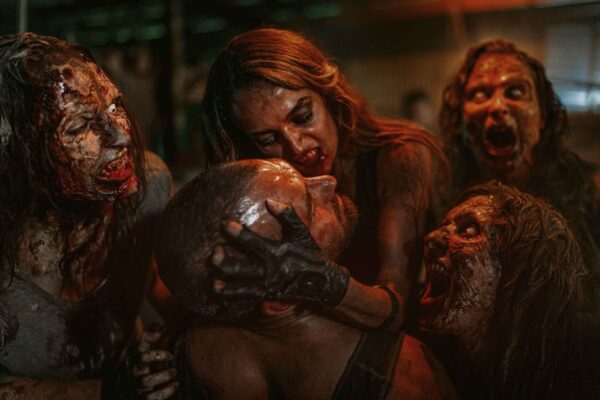
Kelly McNeely: You’ve obviously spent a lot of time building this end-of-the-world world. You’ve lived in it for quite some time starting back with Wyrmwood. How did you extrapolate the zombie-powered machinery and hookups?
Kiah Roache-Turner: There’s kind of an immature teenage logic going on there, none of it is scientifically based – nor should it be – it’s like they never explained the lightsabers in Star Wars. Nobody cares that lasers can’t stop, you know what I mean?
And with us, we’re just like, let’s come up with something cool and not explain it. And that way, you know, we’re not pretending like we’re trying to be scientists. I’m a big fan of the less exposition the better. So we just came up with this kind of basic, vague, bizarre concept that holds some sort of routing in science, where we’ve got the methane breathing zombies that can be powered.
I mean, we all know that you can run a very small engine on methane. And if you add the idea of this sort of bizarre, unusual, very powerful virus that’s taking over the body, I guess the viral stuff mixed with the methane coming out of the zombie’s mouths could be powerful enough to run an engine, but then just never explain it. Like, let’s just go with it, and the audience will either go with this or they won’t.
Some people think it’s ridiculous, some people think it’s super cool. But either way, the plot moves fast enough for you not to question the science of it too much. But really, when we were writing the first one, one of my favorite notes – it’s still my favorite script note to date – because everybody who’s giving you script notes falls over themselves trying to be clever. They all just want to prove that they’ve read Robert McKee’s Story, you know, and they’re all up on William Goldman’s Adventures in the Screen Trade, everybody’s trying to give you regurgitated brilliance in notes.
We got a note that just said “more cool shit”. And I was like, ah, I love that because I knew exactly what they meant. And that’s what we started to do. We just started to put more kind of weird, bizarre, cool things in there. And we really remembered that note where we came to write Wyrmwood: Apocalypse, when he’s going through his basically banal motions of waking up in the morning and going through his morning routine. And usually, you know, somebody gets up and they maybe scroll some Facebook and have a coffee and do some exercises, read the paper and then go to work.
You know, he gets up, he takes a pill, he does some exercises, he has some coffee, he blows a zombie’s head off, he hooks up his barbeque to a methane zombie and that is what runs the barbecue, and he cooks some meat and has some brekkie, he has to replace one of the battery zombies that’s lost its methane so that he can still run his generators, make sure that the zombie that is running his irrigation hookup that gives water to his vegetables is running correctly, and then he gets in his spiked armored truck and goes to work, you know? And I love the fact that it’s this incredibly banal series of events in this incredibly interesting world. And to me, where fantasy and the banal meet, that’s my favorite. I really love scenes like that in movies, you know?
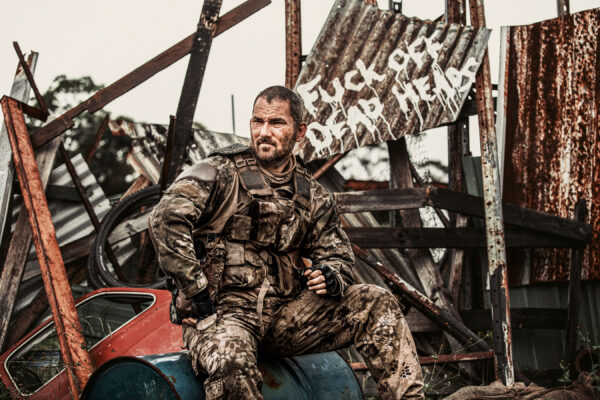
Kelly McNeely: I want to talk about the stunts a little bit as well, because the stunts in the films are so cool. I reckon that you put a lot of time and energy and work in with the team to make sure everything runs smoothly and safely.
Kiah Roache-Turner: Like we love practical effects, and practical stunts. My feeling on all the digital stuff is that, really, digital shouldn’t be any more than about 20 or 30% of the frame.
It should only be there to augment what is already practically there in the frame. And obviously, that extends to stunts in a big way. And the fact that you’re bringing up the stunts I love, because aw man, we had a pretty low budget, Kelly. I can’t even tell you the number because it’s pretty embarrassing.
But you know, low budget in America means one thing, but it’s a totally different thing in Australia, it’s even lower. It’s moving towards micro budget. And when we sort of were divvying out the budget breakdowns to our heads of department, I would just watch one by one as their face fell, just looking at the number going, what!? I mean, maybe if this was a low budget romantic comedy, but this is an action film where we have to build everything, like you’ve got 300 stunts, and this is the number you’re giving us?!
And they had to deal with it. And our stunt guy, George Saliba, he kind of looked at it, and he did that thing where you go, *long exhalation*… okay. And I could just see him packing away all these expensive pieces of equipment in his head. Like, “we’re not using that, we’re not using that”… Basically, what we have to do is just come up with a simple way to do everything. We’re still going to use these amazing gymnastic people that he’s got. And we’re still going to have to have stunt people, but there’s going to be a lot less rigging. So all of the stunts that you see, are really just very gymnastic individuals throwing themselves backwards and forwards and being hand yanked by ropes that we then digitally erase.
There’s a lot of very old school stuff, and more than you would imagine are the actors themselves. And even sometimes he’d turn up and he just be like, “okay, the actors are going to do this”. And I’d look at him and I go, there’s no way an actor can do this. He’d say, “no, no, I’ll show you” and then I’d look at it, and I go, oh, actors can do this *laughs*. And so a lot of the stuff, you see the performers themselves, just just hammering into it.
But you know, that’s the way they did the original Mad Max. And that’s the way we did this one. I mean, the only difference is they were in the big bad 1970s in Australia, which is actually like a wasteland unto itself. The 70s in Australia was like, oh my God, that’s like a medieval town *laughs*.
And we just went over to this little fruit farm about an hour out of Sydney, and we created our own little medieval town and made a movie. And that’s really the only way we could do it, we had to just make a bubble out in the outback. Because we were shooting in the middle of the pandemic, too. And that was another weird irony where everybody in the world is wearing masks and freaking out, and a lot of people are dying because of a global pandemic. And I’m making a movie where everybody’s wearing masks and freaking out, and a lot of people are dying, because of a global pandemic. It was a very strange time. But we created a very effective bubble. We had nurses on site every day.
Not only did we not get a COVID case, nobody even got sick. And I’ve never seen that on a film. Usually at some point – sometimes even twice or three times – a flu will go through the group, and everybody will be sick. And then you just keep going. And like every now and again, somebody in a department will go, but usually – because film people just have to – they push through. But if even one person cracked a cough on this film, it would have shut us down. And that was terrifying because we couldn’t afford to shut down. We’re not a big budget film, so if we shut down, we’re in real trouble. So if we shut down halfway through, the film may not have been finished.
There was a lot of hard work with the COVID protocols and Screen Australia – one of our funding bodies – came in for extra money. We were one of the few films that were able to continue in the middle of a full on pandemic because as we were gearing up to shoot, we were just watching other productions fall. Everybody else went, “we’re not going to do it”, but we figured we could do it because we’re all shooting in a bubble in the outback. Nobody’s coming in, nobody’s coming out, we’re all just sitting in our own little Wyrmwood bubble.
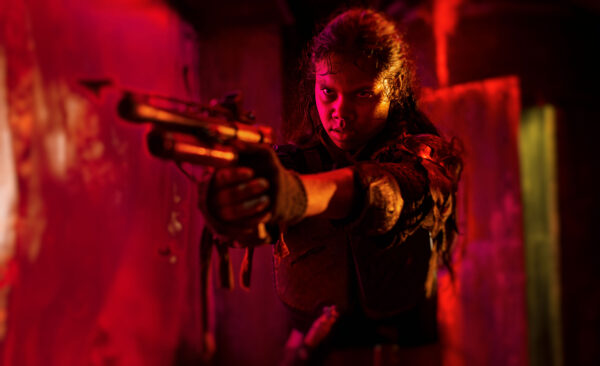
Kelly McNeely: You’ve got some returning cast members, obviously, and some new faces too. They’re completely throwing themselves into their roles. Tasia Zalar and Shantae Barnes-Cowan, they are a powerful addition to the cast. How did they get involved?
Kiah Roache-Turner: It’s funny, because I think talking back and forth to some people, I’ve read a couple of reviews where people are like, “there’s a lot of people in this film”, but it’s because we wrote it to be a TV series. We were gonna do the TV series, and then maybe more films. And so it’s a compression. The arc of the first series was compressed into a 90 minute film, that’s why we’ve got all these characters popping up everywhere.
Shantae Barnes-Cowan was amazing. She’s like, barely 17 – she was effectively 16 – and she’d never had an acting lesson. She is just a really awesome netball player from a very small town four hours out of Adelaide. And somebody saw her in a magazine because she was in an article because she does charity work out in Whyalla, where she’s from. And they just saw her and said, oh, she should be in films. They cast her in a TV show and she’d never acted before, she had a tiny part.
She was the first person we auditioned, and she just blew us away. She came into the audition and just killed it. Cried in the audition, real tears. I was like, who is this?! Her father drove her four hours to audition in Adelaide, and then they drove four hours back. It was an eight hour commitment. I just wanted to give her the part there and then. She holds the film together. She’s kind of the lead – there’s sort of two leads, her and Rhys – but really, the narrative spine really sits on Shantae’s character. And she will be the spine of the third film if we get to do it.
Tasia Zalar has been around a little bit longer. She’s been in Aussie films and TV for ages, and is always good. We didn’t even really need to audition there. She was even more impressive than I thought. She’d just turn up on set, and every time she just went to eleven. I never had to direct her. It was one of those weird things where every time I said action, she just went above and beyond, and I said cut, I guess just go back to your trailer and wait until we’re ready for you again. I never had to say anything, do anything, she just came loaded for bear. Just both barrels, she was ready. And a director loves that, because it just means less work for me *laughs*. So yeah, that those were two very lucky pieces of casting.
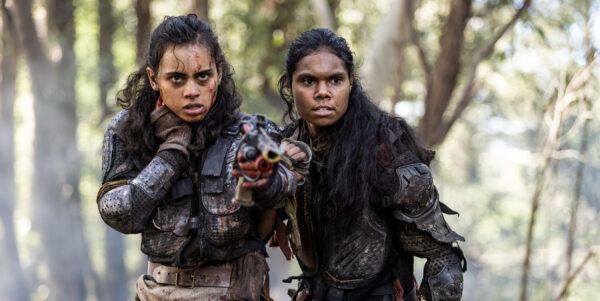
Kelly McNeely: I want to do some sort of quick zombie hot takes here. So, first: fast zombies or shambling zombies?
Kiah Roache-Turner: Oh, it’s got to be shambling because shambling is the George A Romero thing. What we did was we went with both, we cheated. We went fast at night, slow during the day. So during the day, you can have fun, but at night, it becomes kind of 28 Days Later, and more recently, Train to Busan or World War Z. You know, there are a lot of running zombies these days. But to me, you kind of want to have both because the sprinting zombies are terrifying, but they’ll just get you too quickly. The shambling zombies, the great thing about them is it makes it fun. And as Shaun of the Dead proves, while they’re shambling towards you, you can try a cricket bat, you can try some records, you can try a screwdriver, you have time to try a few things out, so it becomes more like a theme park ride.
There’s never any super threat, because if one comes at you, you can just walk away. It’s the easiest thing in the world. Just don’t trip over, don’t keep looking back and accidentally run into another one around the corner. There’s a few rules to obey, but most of the time, it’s pretty fun. If you’ve got a baseball bat and some friends who like carnage, you’re gonna be okay. So yeah, I mean, the shambling ones are the fun ones. So I’m gonna have to go with them.
Kelly McNeely: So that kind of leads well into my next question: what is the best melee weapon in a zombie apocalypse, do you reckon?
Kiah Roache-Turner: Well, the problem there is I can’t make anything up because I have read World War Z by Max Brooks. And I know that it’s like this kind of combination axe/pickaxe thing. I can’t even remember what they call it. The idea is you’ve got this sort of axe hammer thing that you can chop at them with, but then if you want to go for the brain, you turn it around for the pickaxe, and you go straight in the brain and tha cuts off the central nervous system. So it’s a kind of club pickaxe malady thing that Max Brooks invented.
It still weirds me out that the guy who is responsible for sort of 20th century zombie science is Mel Brooks’ son, isn’t that the weirdest thing?
Kelly McNeely: What?! I didn’t know that!
Kiah Roache-Turner: Mel Brooks is honestly one of the most talented comedians ever. And Max Brooks – his son – has reinvented the concept of the zombie for the 20th century. So they’ve both done very big things in their lives.
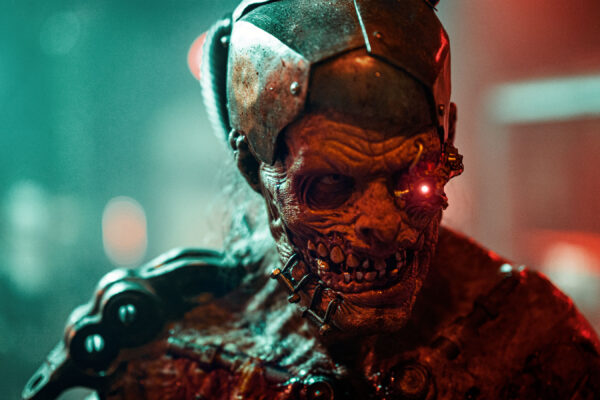
Kelly McNeely: What would be the best mode of transportation in a zombie apocalypse?
Kiah Roache-Turner: Well, it depends if you’re a helicopter pilot with access to a helicopter, obviously. But I mean, who can fly that thing. And also, helicopters are tricky. You think you can just jump in and take off, but I think they take a few hours just to prep – to warm up the engines and all that – like you can’t just jump in a helicopter. So yeah, there’s a lot of things that you need to do. So it’s not really what you’d think.
I mean, me and my brother knocked our heads together and I think we came up with a ready to assemble thing where you could probably do it in your backyard. You just get the classic Aussie Hilux, and you armor it up. And you make sure that the windows close and stuff so you can sleep in it. And I think I think that’s pretty good. Make sure it’s four wheel drive and go bush if you need to, make sure there’s plenty of little holes, just stick your shotguns out. And I think that’s the one we made in Wyrmwood
Kelly McNeely: Definitely more maneuverable than the bus in the Dawn of the Dead remake.
Kiah Roache-Turner: A bus is a terrible idea *laughs*. The roads are going to clog up in two seconds. So you’re just gonna be waiting in a bus, that’s what’s gonna happen, you’re in the world’s biggest traffic jam. Whereas with a real off road vehicle, you can take it into the bush and if you’ve got a big enough suspension you can actually take that over boulders, so no, no, no, don’t do the bus. C’mon guys, think about it.
Kelly McNeely: If zombies are taking over, where do you go?
Kiah Roache-Turner: Ah, I mean I don’t know. The thing is, where do you go? And that’s the point of the armored vehicle, is you do need to keep moving. Because I think anywhere you go, they’re going to congregate because there’s millions and millions and hundreds of millions of them. So you have to kind of keep moving I think, which is why a spiked armored vehicle you know with a huge amount of fuel is probably the way to go. I mean, people say I’ll get in a boat and go to an island, but my thought there is always like, but can’t they just walk on the bottom of the ocean, and just walk straight to wherever that island is? So you’ve got to be careful, you know. I think just keep moving. Arm your vehicle up, make sure it’s got spikes like Mad Max, and then just go where other people aren’t and you’ll be right.
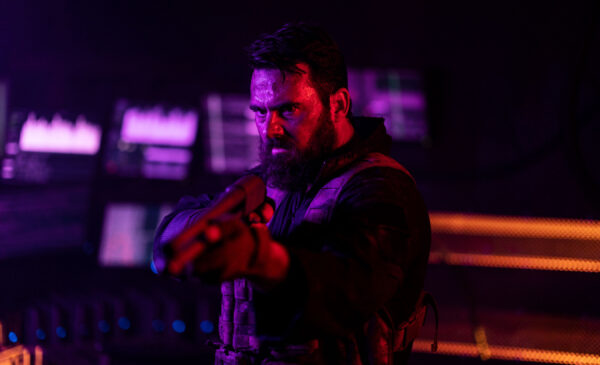
Kelly McNeely: So what’s next for you?
Kiah Roache-Turner: I’ve got a monster movie in the works, that is a little bit more serious than Wyrmwood. It’s a classic kind of single location, family trapped with a monster vibe. It’s kind of like my Alien, or Jaws, or The Thing. Those are the three that I’m kind of going back to with the script and all the rewrites, and just the look and the tone of the thing. But this one would be terrifying. I set myself a task of trying to write the most terrifying thing possible. Like if this is the last movie I made, at least I went out scaring the pants out of a generation. There’s scenes in it, where – if they let me make this – people will leave the theater. Not in a gory sort of Hostel torture porn kind of way. It’s just the concept itself is so horribly disturbing, and yet primal.
Some comedian who was saying, “you guys don’t know how lucky you are, because 95% of organic life on this earth dies screaming, being eaten from behind”. Just whenever you get depressed, or my phone’s not working, just remember, you’re gonna die in a bed, probably, pretty happy on Oxycontin. Most things on this earth die with something attacking them with claws and teeth. And so there’s a primal thing to this script that I’m really looking forward to doing.
And then there’s Wyrmwood 3. We’re just looking at how it does in the US. We got a glowing review from the New York Times, and it did nothing but glow. I read it, and I’m like, there’s nothing negative here. It doesn’t really get much better than that. So now, it’s really good to me, because I’m a sensitive artist *laughs*. I read the reviews, and I get so upset, you can’t help but get upset because it’s personal, you know? And it’s worse when they’re really smart. Because you’re like, oh, they’re right. I agree with that.
Like I said, I think Wyrmwood is a trilogy. The longer we do this, the more I realize that the third film will probably answer all the core questions, and we will close the arcs of the original team, I think. And we’ll finally answer the question, what’s making the zombies? Which is a fun one, too, because we’ve got some pretty cool ideas about that. It’d be upsetting if Star Wars finished with The Empire Strikes Back, you know? You want to do your Return of the Jedi.
Wyrmwood: Apocalypse is available now on Digital in the US
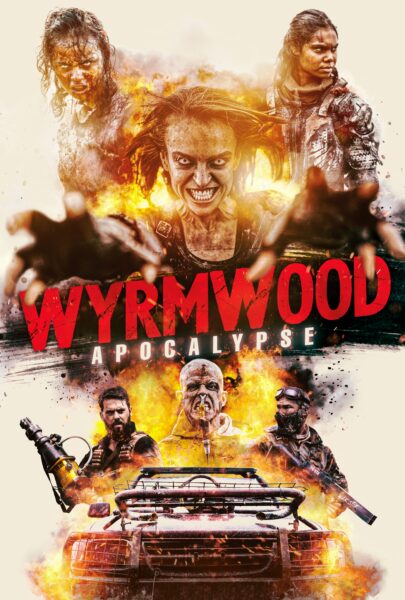
Listen to the 'Eye On Horror Podcast'

Lists
Unbelievably Cool ‘Scream’ Trailer But Re-Imagined As A 50s Horror Flick

Ever wonder what your favorite horror movies would look like if they had been made in the 50s? Thanks to We Hate Popcorn But Eat It Anyway and their use of modern technology now you can!
The YouTube channel reimagines modern movie trailers as mid-century pulp flicks using AI software.
What is really neat about these bite-sized offerings is that some of them, mostly the slashers go against what cinemas had to offer over 70 years ago. Horror movies back then involved atomic monsters, scary aliens, or some sort of physical science gone awry. This was the era of the B-movie where actresses would put their hands against their faces and let out over-dramatic screams reacting to their monstrous pursuer.
With the advent of new color systems such as DeLuxe and Technicolor, movies were vibrant and saturated in the 50s enhancing primary colors that electrified the action happening on screen, bringing a whole new dimension to films using a process called Panavision.
Arguably, Alfred Hitchcock upended the creature feature trope by making his monster a human in Psycho (1960). He used black and white film to create shadows and contrast which added suspense and drama to every setting. The final reveal in the basement would probably not have been if he had used color.
Jump to the 80s and beyond, actresses were less histrionic, and the only emphasized primary color was blood red.
What is also unique about these trailers is the narration. The We Hate Popcorn But Eat It Anyway team has captured the monotone narration of 50s movie trailer voiceovers; those over-dramatic faux news anchor cadences that emphasized buzz words with a sense of urgency.
That mechanic died out long ago, but luckily, you can see what some of your favorite modern horror movies would look like when Eisenhower was in office, developing suburbs were replacing farmland and cars were made with steel and glass.
Here are some other noteworthy trailers brought to you by We Hate Popcorn But Eat It Anyway:
Listen to the 'Eye On Horror Podcast'
Movies
Ti West Teases Idea For Fourth Film In The ‘X’ Franchise
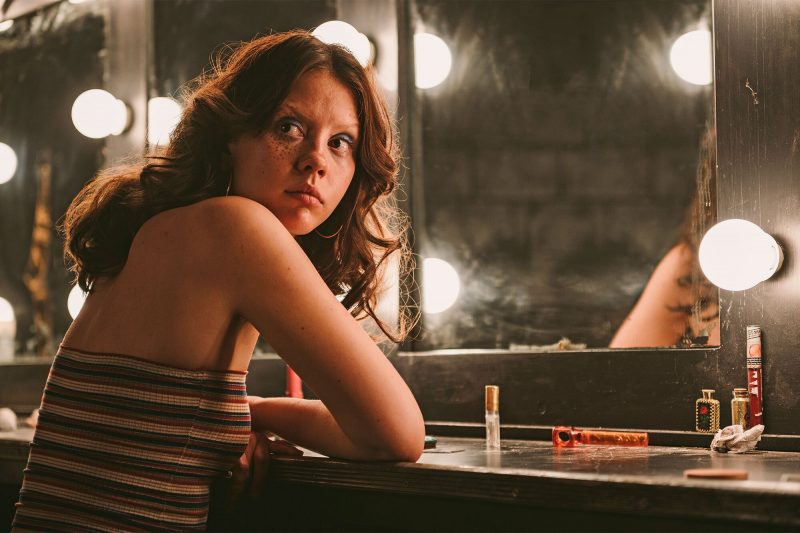
This is something that will excite fans of the franchise. In a recent interview with Entertainment Weekly, Ti West mentioned his idea for a fourth film in the franchise. He stated, “I do have one idea that plays into these movies that could maybe happen…” Check out more of what he said in the interview below.
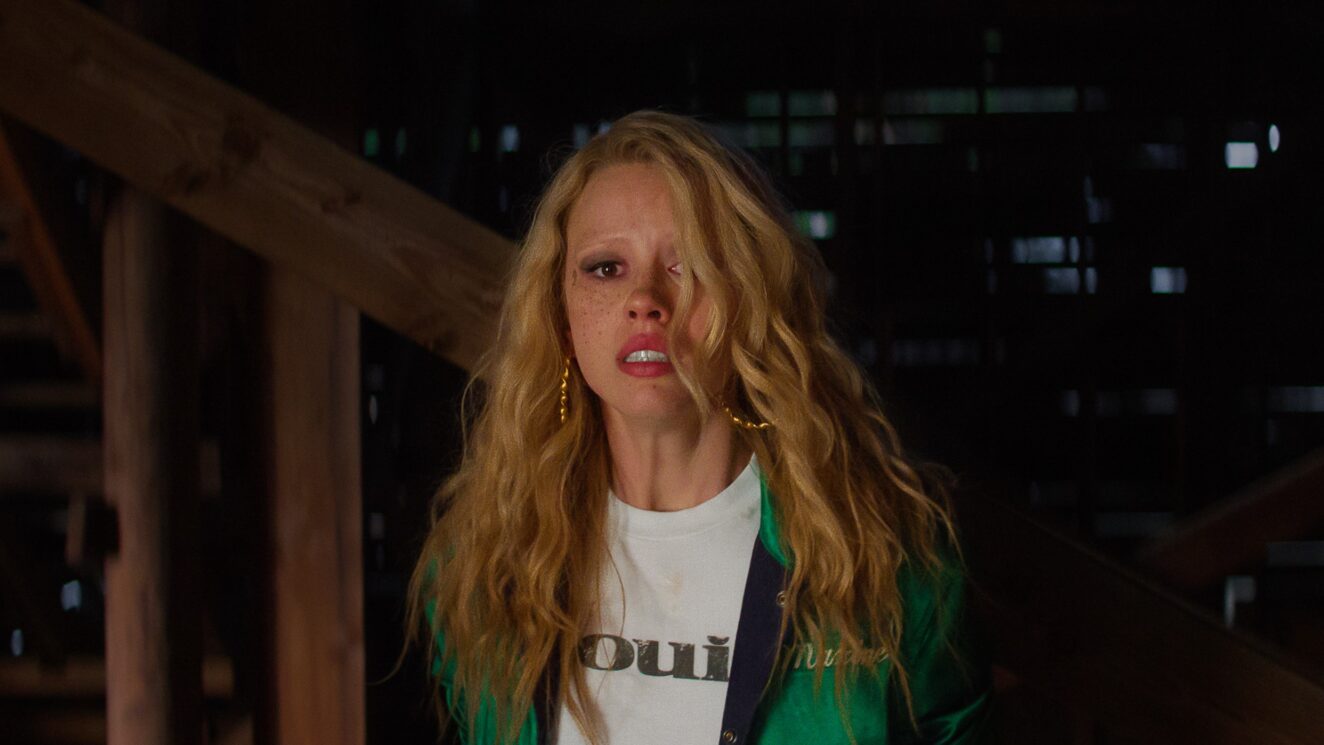
In the interview, Ti West stated, “I do have one idea that plays into these movies that could maybe happen. I don’t know if it’ll be next. It might be. We’ll see. I’ll say that, if there’s more to be done in this X franchise, it’s certainly not what people are expecting it to be.”
He then said, “It’s not just picking up again a few years later and whatever. It’s different in the way that Pearl was an unexpected departure. It’s another unexpected departure.”

The first film in the franchise, X, was released in 2022 and was a huge success. The film made $15.1M on a $1M budget. It received great reviews earning a 95% Critic and 75% Audience scores on Rotten Tomatoes. The next film, Pearl, was also released in 2022 and is a prequel to the first film. It was also a big success making $10.1M on a $1M budget. It received great reviews earning a 93% Critic and 83% Audience score on Rotten Tomatoes.
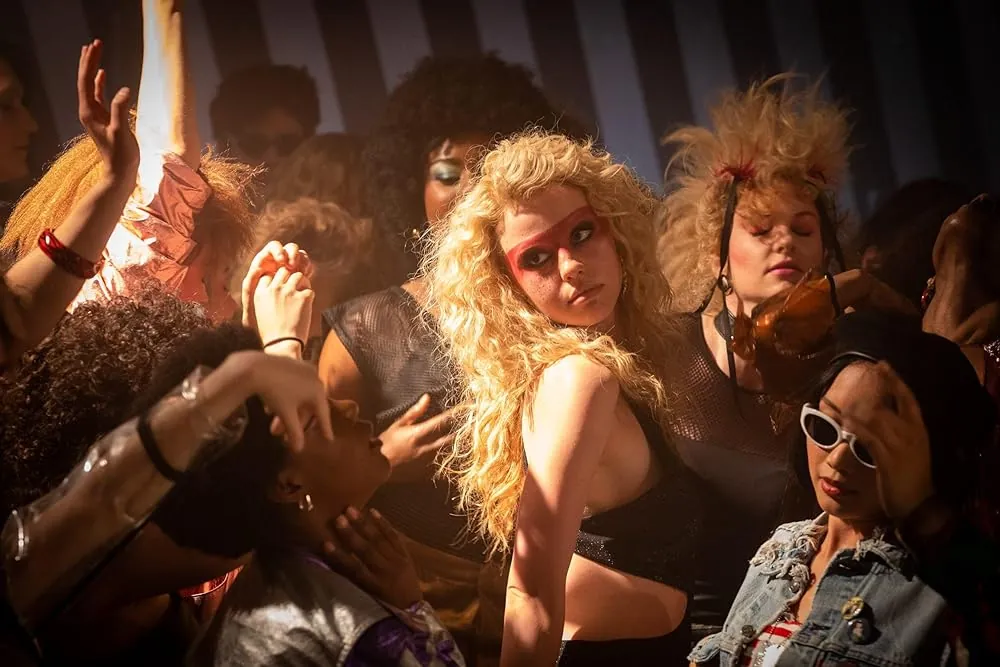
MaXXXine, which is the 3rd installment in the franchise, is set to be released in theaters on July 5th of this year. It follows the story of adult film star and aspiring actress Maxine Minx finally gets her big break. However, as a mysterious killer stalks the starlets of Los Angeles, a trail of blood threatens to reveal her sinister past. It is a direct sequel to X and stars Mia Goth, Kevin Bacon, Giancarlo Esposito, and more.
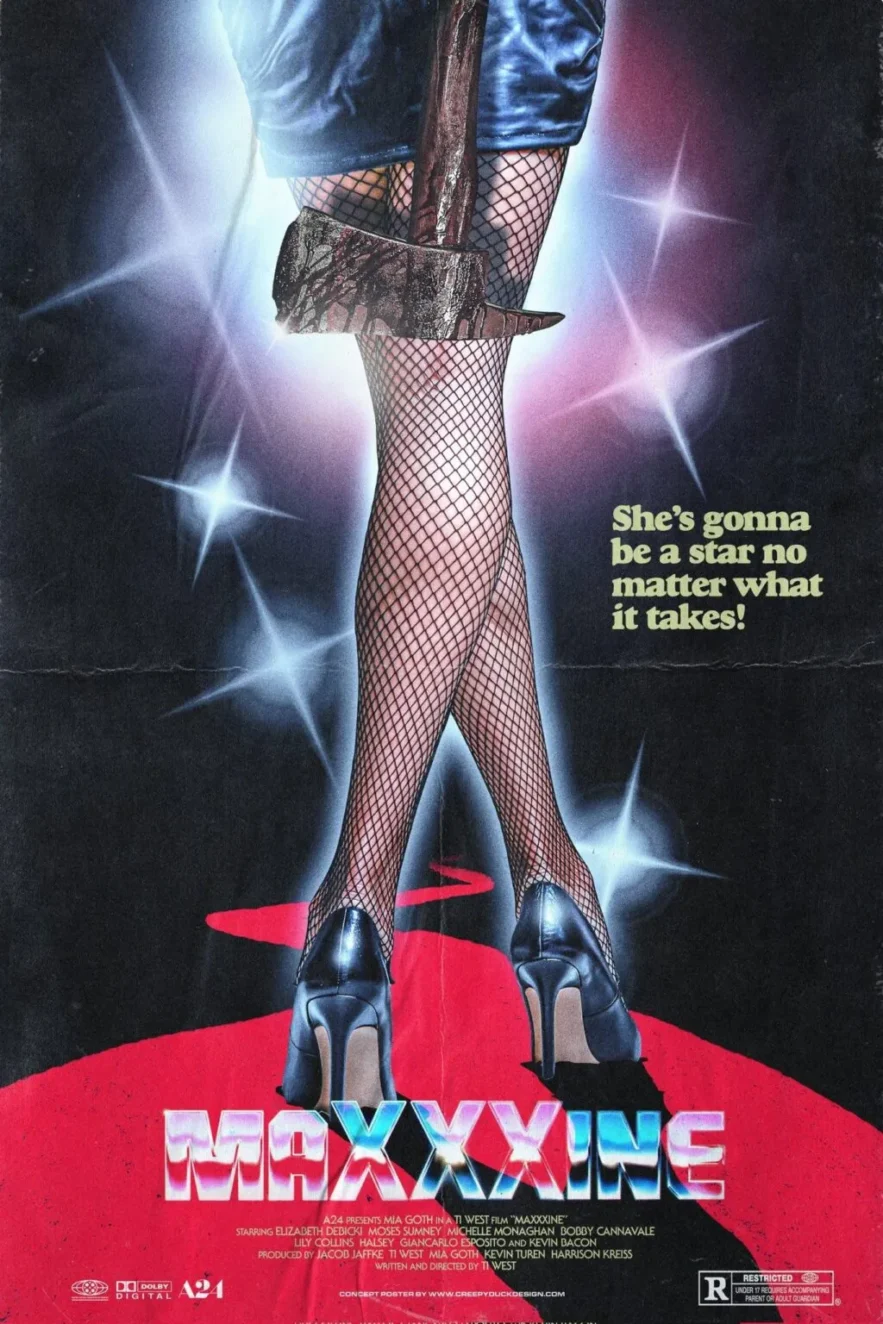
What he says in the interview should excite fans and leave you wondering what he may have up his sleeve for a fourth film. It seems like it may either be a spinoff or something entirely different. Are you excited for a possible 4th film in this franchise? Let us know in the comments below. Also, check out the official trailer for MaXXXine below.
Listen to the 'Eye On Horror Podcast'
Movies
’47 Meters Down’ Getting Third Movie Called ‘The Wreck’

Deadline is reporting that a new 47 Meters Down installment is heading into production, making the shark series a trilogy.
“Series creator Johannes Roberts, and screenwriter Ernest Riera, who wrote the first two films, have co-written the third installment: 47 Meters Down: The Wreck.” Patrick Lussier (My Bloody Valentine) will direct.
The first two films were a moderate success, released in 2017 and 2019 respectively. The second film is titled 47 Meters Down: Uncaged.
The plot for The Wreck is detailed by Deadline. They write that it involves a father and daughter trying to repair their relationship by spending time together scuba diving into a sunken ship, “But soon after their descent, their master diver has an accident leaving them alone and unprotected inside the labyrinth of the wreck. As tensions rise and oxygen dwindles, the pair must use their newfound bond to escape the wreck and the relentless barrage of bloodthirsty great white sharks.”
The filmmakers are hoping to present the pitch to the Cannes market with production starting in the fall.
“47 Meters Down: The Wreck is the perfect continuation of our shark-filled franchise,” said Byron Allen, founder/chairman/CEO of Allen Media Group. “This film will once again have moviegoers terrified and on the edge of their seats.”
Johannes Roberts adds, “We can’t wait for audiences to be trapped underwater with us again. 47 Meters Down: The Wreck is going to be the biggest, most-intense film of this franchise.”
Listen to the 'Eye On Horror Podcast'
-

 News7 days ago
News7 days ago“Mickey Vs. Winnie”: Iconic Childhood Characters Collide In A Terrifying Versus Slasher
-
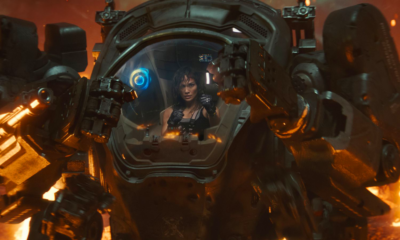
 Lists6 days ago
Lists6 days agoNew to Netflix (U.S.) This Month [May 2024]
-
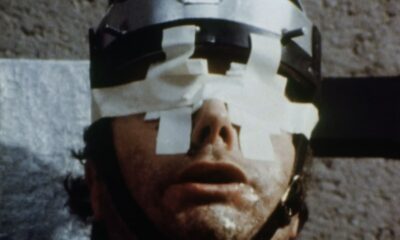
 News6 days ago
News6 days agoNew ‘Faces of Death’ Remake Will Be Rated R For “Strong Bloody Violence and Gore”
-
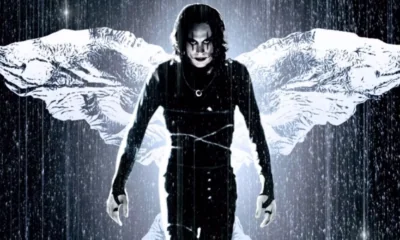
 News5 days ago
News5 days ago1994’s ‘The Crow’ Coming Back to Theaters for A New Special Engagement
-
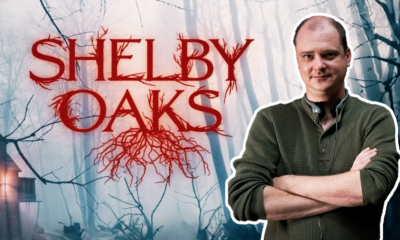
 Movies7 days ago
Movies7 days agoMike Flanagan Comes Aboard To Assist in Completion of ‘Shelby Oaks’
-

 Lists5 days ago
Lists5 days agoThe Top-Searched Free Horror/Action Movies on Tubi This Week
-
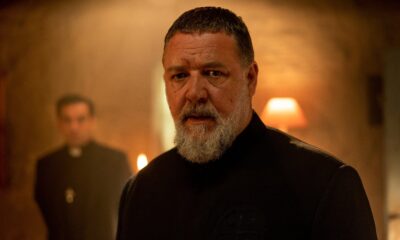
 News6 days ago
News6 days agoThe Pope’s Exorcist Officially Announces New Sequel
-
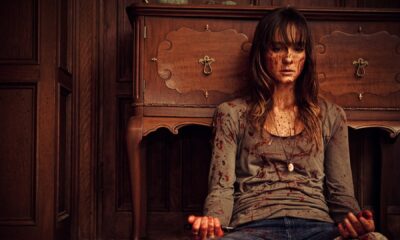
 News6 days ago
News6 days agoA24 Creating New Action Thriller “Onslaught” From ‘The Guest’ & ‘You’re Next’ Duo


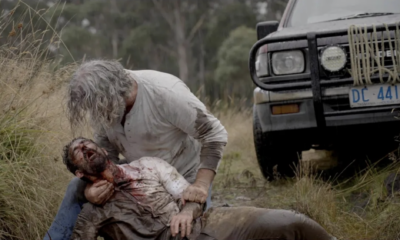

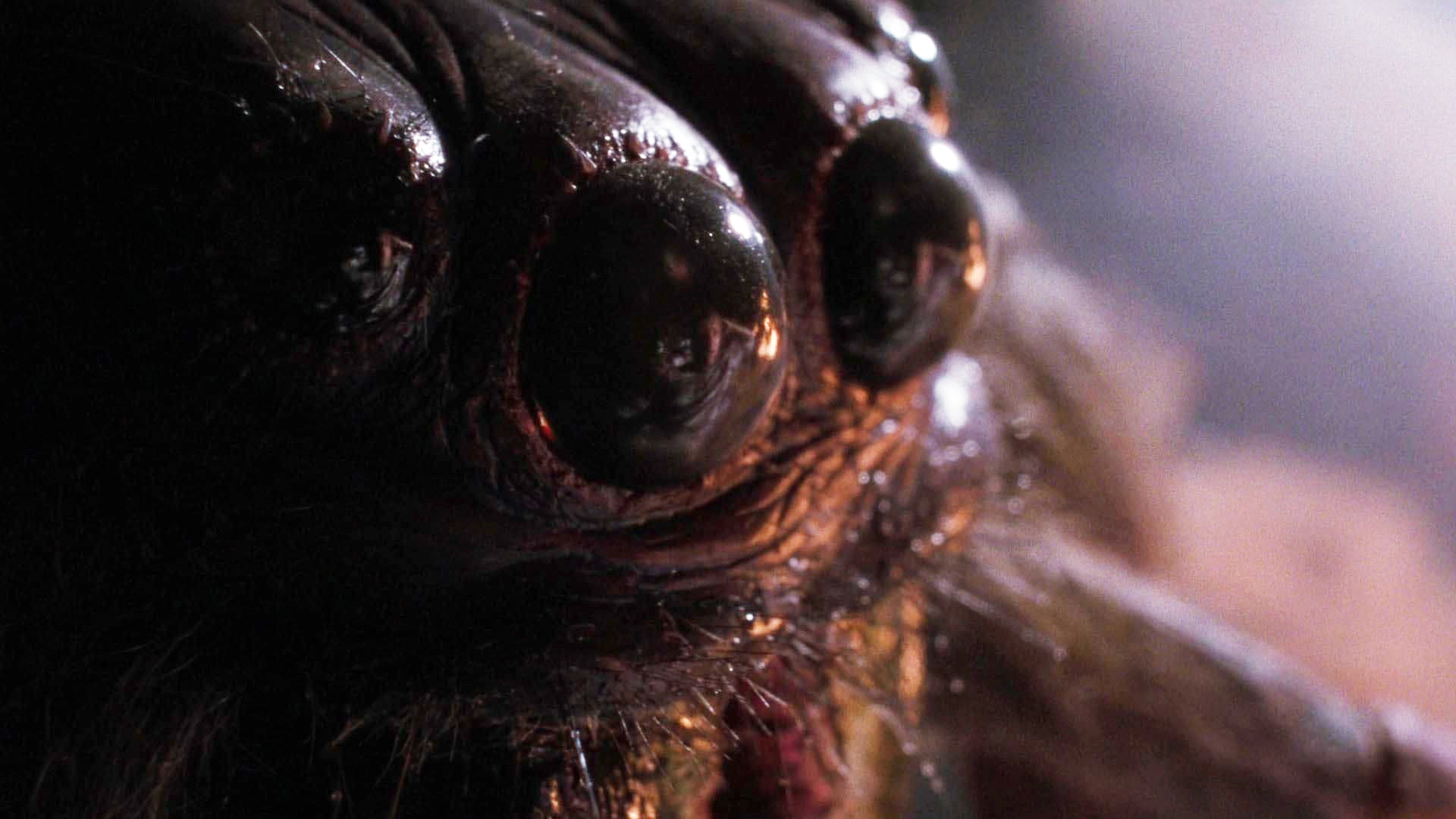



















You must be logged in to post a comment Login